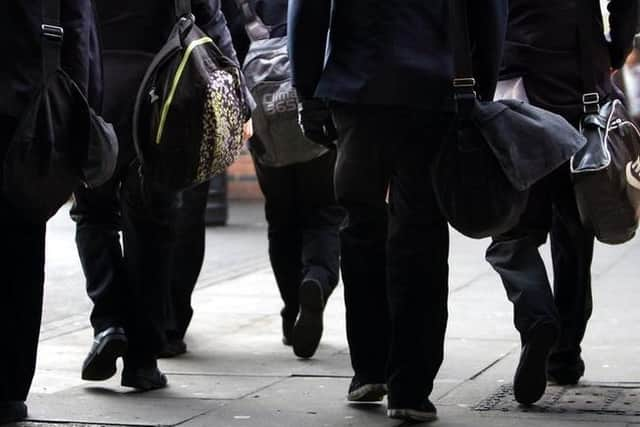Covid infection rate for Bedford's secondary school age children has doubled since they returned to class
and live on Freeview channel 276
The Covid infection rate for secondary school age children in Bedford has doubled since they first returned to school.
And the number of positive case notifications is more than four times higher than it was this time last year.
Advertisement
Hide AdAdvertisement
Hide AdIan Brown, chief officer for public health, gave an update on Covid in schools at yesterday’s (September 30) Bedford Borough Council Local Outbreak Engagement Board.


Mr Brown told the board that there was currently a high rate of infection in the borough’s secondary school age children.
“So far, we have received nearly 800 positive case notifications from schools”, he said. “This is roughly twice the number we received in the first month when schools went back for the summer term.
“It is four or five times the number of cases we received this time last year.”
Advertisement
Hide AdAdvertisement
Hide AdAnd the baseline measures that schools have put in place following government guidance are a balance between preventing infections and minimising disruption.
Mr Brown explained that there are 20 educational settings, including 12 primary and five secondary schools, that have met the threshold for further action.
“That's where 10 per cent of a class or a group who regularly mix, or five pupils, whichever comes first, test positive.
“Schools are then encouraged to see whether there are additional steps that they can take and we are supporting them to do that in many cases”, he said.
Advertisement
Hide AdAdvertisement
Hide AdMeasures for schools that reach the threshold include reintroducing face coverings for a set period of time, typically two weeks.
“With primary schools, that is for staff only, but for secondary schools and colleges that can be staff and students”, explained Mr Brown.
“Then we can think about whether or not that is just in communal areas or whether it also includes classroom settings.”
Mr Brown said that there is much more of an expectation this term of balancing Covid risk against educational disruption.
Advertisement
Hide AdAdvertisement
Hide Ad“Whereas in the last term, the focus was on minimising Covid risks at all costs,” he said.
“We're now having conversations with each setting about what will work for them and how well that will be tolerated vs the education impacts to the schools.
“It is very challenging for schools, students and staff because they may feel that in other parts of society the same levels of stringency are not required anymore.
“But we are trying to emphasise that it is about minimising disruption to education and keeping our schools as safe as possible, and the vast majority completely understand that.”